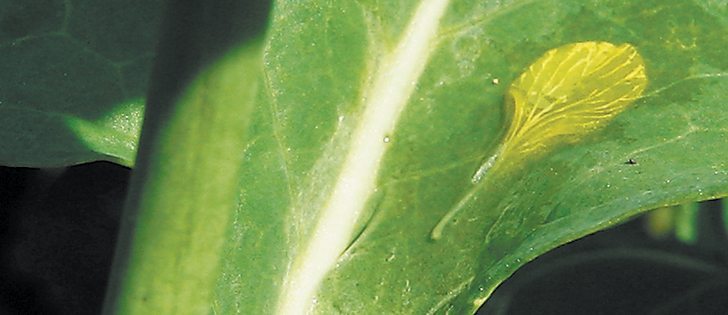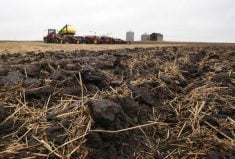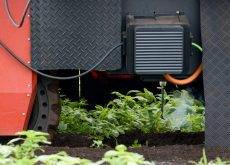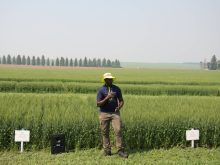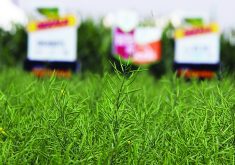Spraying is advised if yield potential is 35 bushels per acre or more
Conditions across the West are ideal for the development of scler-otinia, which can reduce canola yield by 50 percent or more if left un-checked.
Dense canola stands across the Prairies, frequent rains and moist, humid conditions in the crop canopy have combined to make an ideal environment for sclerotinia infection.
Clint Jurke, agronomy specialist with the Canola Council of Canada, said many growers are applying fungicides.
“There certainly has been moisture, and that’s the one thing that the disease needs,” Jurke said.
“It just really comes down to how much moisture is in that crop canopy as to what the sclerotinia risk is going to be.”
Read Also

New wheat varieties offer Prairie farmers jump in yield
Three experimental wheat varieties developed by Agriculture Canada are showing yield increases of eight to 15 per cent over AAC Brandon wheat in registration trials.
For many producers, deciding whether to apply fungicides will be influenced by the crop’s yield potential, Jurke said.
In general, crops with a yield potential of 35 bushels per acre or more should be considered for fungicide application.
Crops with yield potential of 30 bu. or less generally have canopies that are less dense, meaning air flow in the canopy is greater and the risk for infection is lower.
“The wet spring has caused that sclerotia to germinate and produce apothecia, so there will be lots of ascospores around, regardless of which part of the Prairies you’re in,” he said.
“If that crop is fairly wet during the day, that’s all the fungus needs to begin causing a yield loss.”
Fungicide application is expensive.
Costs can be $20 to $30 per acre, depending on the fungicide and application method.
Canola can reach 20 percent bloom just four or five days after the first sign of flowering, so producers should be ready to assess crops shortly after the first flowers appear.
Application is recommended when the crop is 20 to 50 percent in bloom.
Spraying too early or too late will limit the fungicide’s effectiveness. Late applications might also breach harvest intervals for fungicides.
Fungicide must land on canola petals before they fall into the canopy to be effective.
Sclerotinia ascospores cannot infect plants directly. Instead, they need dead plant tissue, such as petals that fall into the canopy and stick to the leaves and stems of canola plants.
Decaying petals give ascospores the energy they need to begin infection.
Once inside the plant, the fungus grows throughout the stem, eventually cutting off moisture and nutrient flow.
Jurke said fungicide application can reduce the severity of losses but will not eliminate infection completely, especially if conditions are favourable throughout flowering.
Sclerotinia tolerant canola varieties are less susceptible to the disease but should not be considered a silver bullet, he added.
“There are sclerotinia tolerant varieties out there, but those varieties will not give you the same kind of control as a fungicide application.”


